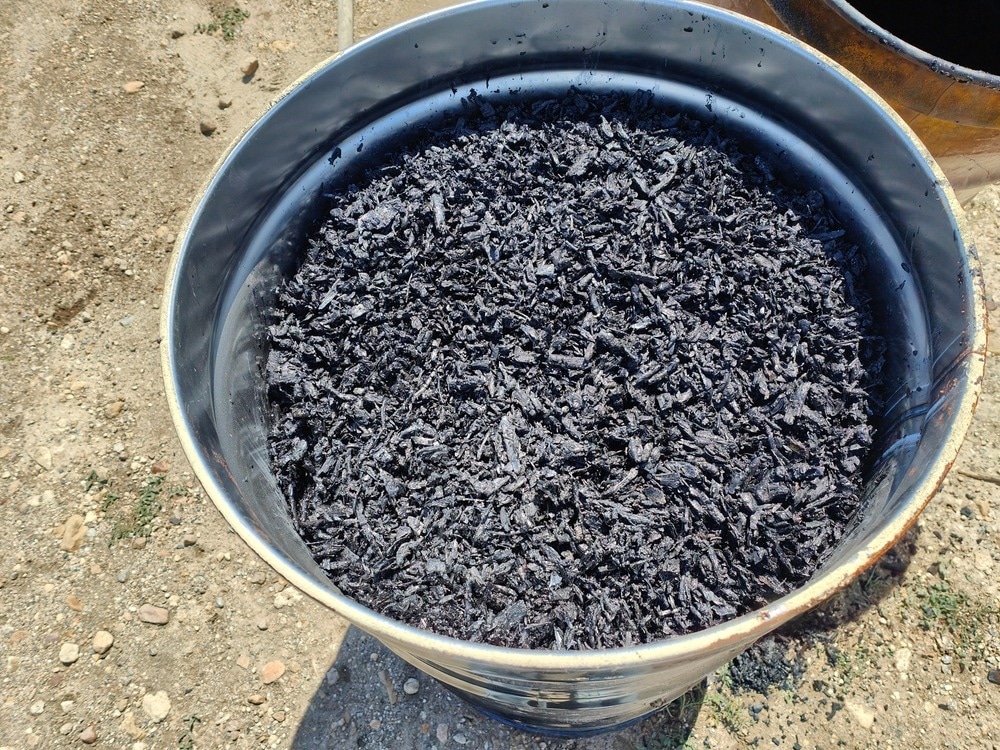In a recent article published in the journal Scientific Reports, researchers investigated the potential of the combined application of biochar and cyanobacteria crusts to mitigate soil wind erosion in arid mining areas subjected to frequent freeze-thaw cycles.

Image Credit: Kevin Kung/Shutterstock.com
Background
Arid mining zones like Bayan Obo face intensive wind erosion, which can be intensified by environmental stresses such as temperature fluctuations, soil degradation, and loss of vegetation cover.
Freeze-thaw cycles, common in such regions, disrupt soil structure by breaking down aggregates, altering soil properties such as pH, bulk density, porosity, and chemical composition. These cycles weaken soil cohesion and increase susceptibility to erosion.
Cyanobacteria crusts naturally aid in stabilizing soil surfaces through the secretion of extracellular polymeric substances (EPS) and filament entanglement, enhancing soil cohesion and erosion resistance. However, their biomass and efficacy decrease under freeze-thaw stress, limiting their long-term protective capacity.
Previous studies have demonstrated biochar's capacity to improve thermal properties, reduce frost heave, and mitigate damage caused by temperature fluctuations, but its combined effect with cyanobacteria crusts under freeze-thaw conditions remains insufficiently explored.
The Current Study
The experimental design was conceived around realistic environmental conditions in Bayan Obo, with soil samples collected and placed in trays simulating the natural soil environment. The soil samples were divided into four treatment groups: a control with no amendments, a biochar-only group, a cyanobacteria crust-only group, and a combined biochar and cyanobacteria treatment.
The samples were subjected to 30 freeze-thaw cycles, each involving freezing at -15 °C for 12 hours and thawing at room temperature for 12 hours, to mimic local winter conditions characterized by intense and prolonged freezing.
Soil physicochemical properties, such as pH, electrical conductivity (EC), water content, organic matter, total nitrogen (TN), and aggregate stability, were measured at specific cycles to evaluate the impact of treatments and cycles.
The soil properties were assessed using standard procedures, including pH meters, oven-drying methods, Kjeldahl digestion for TN, and correlation analyses.
Soil surface conditions, including cyanobacterial filament distribution, crust integrity, and soil structure, were visually examined through microscopic and photographic documentation. Wind tunnel experiments simulated natural wind conditions, testing the effectiveness of treatments in reducing wind erosion at various wind speeds.
The experimental setup was based on indoor simulations that included a light environment and controlled temperature conditions, ensuring the reproducibility of natural freeze-thaw cycles. Soil parameters before and after treatment cycles were analysed.
Results and Discussion
Results revealed that freeze-thaw cycles significantly affected soil properties, consistently decreasing parameters such as pH, bulk density, clay content, and aggregate stability across all treatment groups.
The most pronounced changes were observed in soil lacking amendments, indicating that freeze-thaw cycles weaken the soil matrix, making it more vulnerable to wind erosion. The presence of biochar in soil notably increased organic carbon content and improved aggregate stability by acting as a binding agent and increasing porosity.
Cyanobacteria crusts contributed to initial soil stabilization through EPS production, which cemented soil particles and promoted soil organic matter build-up. However, freeze-thaw cycles caused physical rupture of cyanobacterial filaments, reducing crust integrity and its protective functions as observed in microscopic images.
The addition of biochar demonstrated a protective effect, with crust filaments remaining largely intact after multiple freeze-thaw events, thereby preserving the stabilizing functions of cyanobacteria under stress conditions.
The combination treatment of biochar and cyanobacteria resulted in the highest soil stability, demonstrating resistance to structural degradation after multiple freeze-thaw cycles. The enhanced stability is attributed to biochar's interaction with EPS via functional groups such as hydroxyl and carboxyl, which form strong hydrogen bonds and increase aggregate cohesion. This stabilization reduces the dispersion of soil particles during erosion events.
The wind tunnel tests confirmed these findings; treatments combining biochar and cyanobacteria significantly reduced wind erosion, particularly at wind speeds of 15 m/s, where erosion was reduced by approximately 65%.
Conclusion
The study validates the hypothesis that integrating biochar with cyanobacteria crusts offers a promising strategy for strengthening soil resistance to wind erosion under freeze-thaw conditions in arid mining areas.
Applying biochar enhances soil physical and chemical properties, increasing aggregate stability and organic carbon content, inhibiting soil dispersion and erosion.
The protective effect on cyanobacteria filaments under freeze-thaw stress further sustains crust integrity, ensuring long-term stabilization.
The findings demonstrate that biochar and cyanobacteria crusts synergistically mitigate the detrimental impacts of temperature fluctuations and environmental stresses, ultimately reducing soil loss and fostering sustainable land management practices in vulnerable arid regions.
The research suggests that this integrated approach could be adapted for broader application in similar climates worldwide, offering a scientifically grounded pathway toward combating wind erosion and promoting ecological restoration in harsh environments.
Source:
Wang Z., Liu X., et al. (2025). Effect of biochar and cyanobacteria crust incorporation on soil wind erosion in arid mining area under freeze-thaw action. Scientific Reports 15, 16363. DOI: 10.1038/s41598-025-96688-y, https://www.nature.com/articles/s41598-025-96688-y